Are you a social introvert? Might I suggest ... birding?
Remember the "alone together" rallying cry of March 2020? Birdwatching can offer that same promise of independence + human connection, minus the threat of a celebrity-studded "Imagine" sing-along.
Chris McCandless’ plaintive conclusion that “happiness (is) only real when shared” is one of the most haunting aspects of “Into the Wild,” Sean Penn’s 2007 film adaptation of Jon Krakauer’s 1996 best-selling creative nonfiction book of the same name.
Like many of the details in Krakauer’s equally beloved and reviled – and endlessly disputed – book, it’s unclear if McCandless actually wrote those exact words in the margins of a tattered copy of “Doctor Zhivago” as he slowly died of starvation on a long-abandoned bus in remote Alaska.
If he did, the circumstances in which he scribbled those words and his intent are forever lost. Nearly 30 years after its publication, “Into the Wild” continues to stoke theories and arguments about what did or did not actually transpire. Don’t believe me? Ask a long-time Alaskan their thoughts on McCandless, Krakauer or the book, and enjoy the freshly opened can of worms.
How does this grim opening story connect back to birding, you may ask?
While my personal life philosophy, approach and lived reality is a long way from the tortured angst of the nomadic young McCandless, that sentence has stuck with me for nearly two decades. I’ve turned it over like you would a lucky stone in your pocket. It comes to mind most often when I’m alone, immersed in nature and struck with awe. The gratitude for the moment can, at times, feel dulled by a melancholy for the lack of someone with which to share it.
Being able to look to another person and verify an experience – an osprey executing a successful dive for a fish, a barred owl silently moving among the trees, a red fox darting across a field – can make it more real.
What’s the saying? If you find a really cool bird in the woods and no one else is there to confirm you heard it, does it really make a sound? Something along those lines.
Stressed? Try birding. Sad? Go birding again. Tired? Go birding even harder. Bored? Bird.
In practice, my time spent birding in the field (as opposed to the happenstance birding I do when engaged in other activities such as driving, walking to the mailbox, looking out the window during a particularly long meeting) isn’t just an enjoyable hobby – it’s part of my mental health routine.
I crave the clarity and peace that come with quietly observing and appreciating the flora and fauna, and the joy of identifying a new-to-me plant or spotting a familiar favorite bird. As an introvert, solo ventures help me decompress and recharge my batteries after a day job that involves a lot of human interaction.
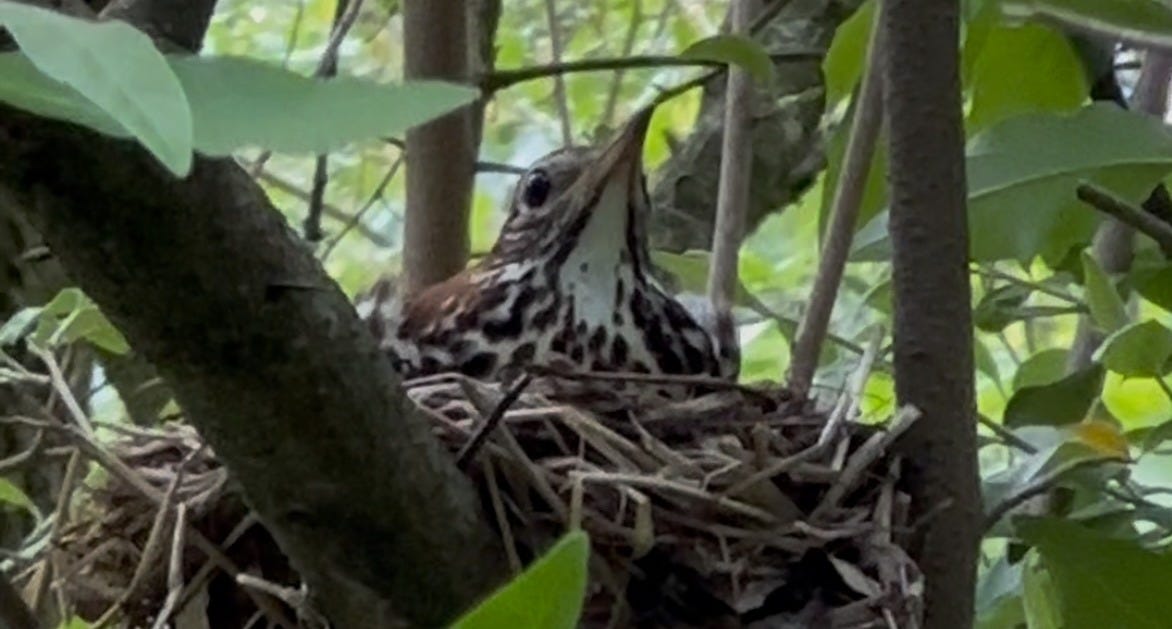
Springtime is my prime time to shine … away from others’ perceptions. Mid-April hits and brings with it the earliest spring migrants. At the first sign of their arrival, I’m out the door and at a park, in the woods, at the shore. Wherever the warblers, flycatchers, vireos, owls go, I try to follow. For five to six weeks, it’s nothing but work, bird, sleep, repeat.
It’s also why this blog sat dormant for nearly two months. Too busy looking for the birds to write about them!
While I regularly hike with friends, most of my focused, list-building/warbler-generating spring migration birding adventures are solo, with the exception of organized bird club field trips. This is by design. In part because of my need for frequent solitude, but mostly because it gives me full independence to bird the way my whims (and eBird data) decree.
It’s a lot to ask a friend or loved one (who isn’t a hardcore birder) to wake up at 5 a.m. on a Saturday to drive an hour (often on rutted dirt roads) to a state game area or such, where, once afield, they’ll be asked to stay rooted in a spot for 30 minutes, slapping away mosquitos while scrutinizing a nondescript thicket for a fleeting glimpse of a suspected warbler that may turn out to be a goldfinch.
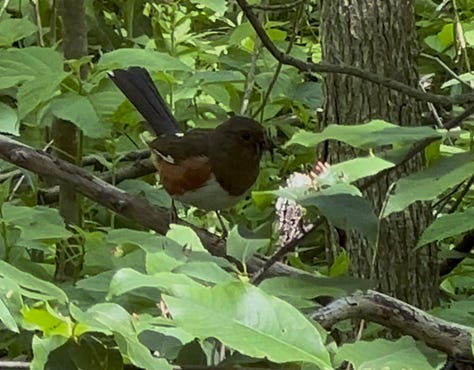

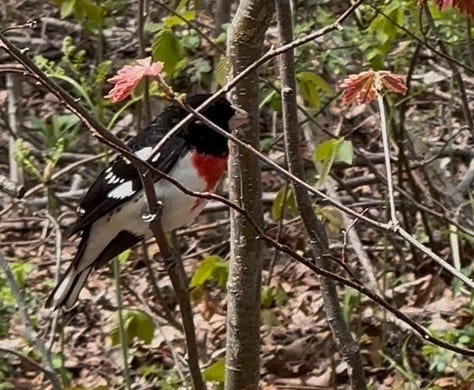
This is a pitch for birding, I swear
By venturing out alone, I’m beholden to no one. I can stay as long or as little at any particular spot as my interest and mood dictate. And I don’t risk alienating and/or boring any of the people I care most about.
That being said, like many introverts, I’m a social introvert, and if you put any stock in these labels, that means I do crave social interaction, but in bite-sized morsels vs. a steady stream.
My preferred intake is with smaller gatherings of trusted friends or family where the conversation is a healthy mix of meaningful discussion and funny banter. But I also thrive with brief, pleasant interactions* with a variety of people, including loose acquaintances and strangers.
(*Except never, ever at the grocery store, because no one wants to talk to anyone at Meijer. Pretend you don’t see me, we never met, we are all invisible.)
With birding, I’ve stumbled into an environment peppered with opportunities for welcome, snack-sized conversation with (usually) like-minded strangers.
On the r/birding subreddit – I know, I know, eww, Reddit – a newbie birder recently sought advice on etiquette and whether it’s OK to talk to others who you find birding in the field. A veteran birder offered up a summary that aligned with my own experience.
Most birders are happy to chat and share tips on what they’re seeing and where. This Redditor’s description of social interactions rang true to me: You might encounter the same familiar faces again and again at your favorite birding spots, and each time, you might have friendly, brief conversations. It’s likely you’ll never exchange first names, in spite of knowing their target birds for the year and how many ticks they’ve pried off their bodies that spring.
A typical encounter may go something like this.
Birder 1: (friendly nod)
Birder 2: (returns friendly nod)
Birder 1: Seen anything good?
Birder 2: Oh, mostly the usual. Found some redstarts nesting over by the pond, and I heard a yellow-billed cuckoo — for the life of me couldn’t get a look at him. You?
Birder 1: There’s a bunch of waxwings along the river. Got a good look at a male chestnut-sided. Been hearing scarlet tanagers all morning, but can’t find one. Man, the trees really leafed out overnight, huh?
Birder 2: Yeah it’s tough. Happens earlier every year, I swear!
It may go on like this for a few minutes, comparing notes, offering tips, sharing recent sightings, and ending with friendly parting words and wishes for “good birding.” Maybe you’ll see the person again and have a similar interaction. Maybe not.
Sometimes, these impromptu conversations can play out longer – and may even include introductions (something almost as rare as getting an unobstructed view of a Cerulean warbler).
This spring, I had a particularly nice exchange with a gentleman who I met while scoping out an active bald eagle nest at my local hotspot. We started out talking about the eagles’ seemingly unusual behavior that afternoon – both adults had left the nest to hunt, leaving no sentry to guard over two unattended eaglets – and shared hopes that everything was OK with the recent hatchlings and their parents.
We wound up in a 30-plus-minute discussion that touched on photography, politics (local and federal), ecology, our families (both of our spouses are supportive of our habits, if slightly less obsessed) and interesting wildlife encounters.
Like any conversation with a birder, our attention was routinely pulled away to track a bird or point out something interesting: “My husband and I really enjoyed Yosemite, but we only got one day there. (Pause, lifting binoculars to face). Do we think that’s an indigo bunting hanging out on that snag? (Pointing.) Yup. Nice. So, anyway, hoping to get back there, but there’s just so many other places we wou– (another pause; binoculars raised). Oh! One of the adults is back! Circling right over there! Looks like he’s got something in his talons!”
It doesn’t have to be a big deal to matter
We each left the encounter with a few new birding tips, places to add to our lists of local and far-flung birding destinations and suggestions on where to locally find target species. But more important – for me, at least – was getting to share the in-the-moment excitement of birds with another human.
Didn’t really matter that this person wasn’t a friend, family member, loved one – or even a friendly acquaintance — and that I may never see them again. It was comforting simply to know another person saw what I saw, and found value in it, too.
It’s akin to the shared curiosity and enthusiasm I experience on a field trip with the local bird club, when a large group of us geek out over spotting an orchard oriole. Or when hiking with a friend and we come across a patch of ghost pipes. Or watching the Northern Lights with my husband in our backyard. A collective feeling of “can you believe we’re lucky enough to see this?”
[I should probably (unfortunately) add the caveat that, of course, personal safety is always a top priority. I’m extremely cautious about strangers, and am always alert to my surroundings. Even when I’m absorbed in one bird, my head is on a swivel, and I am prepared to protect myself, always. I do not hesitate to alter my route or plans the second something or someone seems remotely sketchy, and I will unapologetically walk away from any person or encounter in which the vibe is off. Thankfully, those “off’ times have been few and far between, and are seldom to do with an actual birder.]
The well-documented and welcome rise of birding and new birders post-pandemic means there are more opportunities for more people – introverts and extroverts alike – to enjoy the mental health benefits of connecting with nature.
In the same vein, there are more chances to share at least some of that happiness with others.
Resources and references:





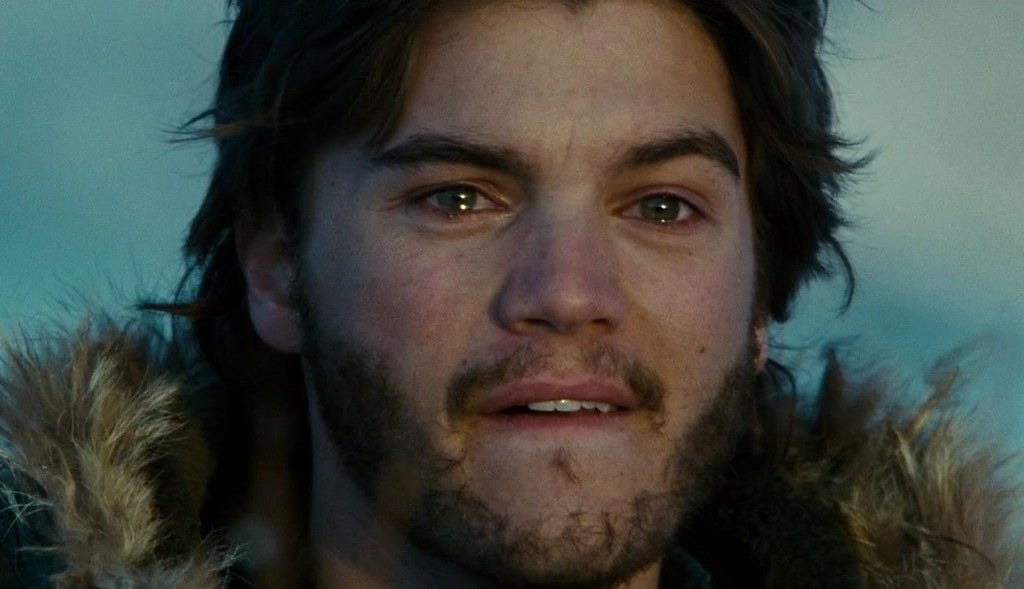
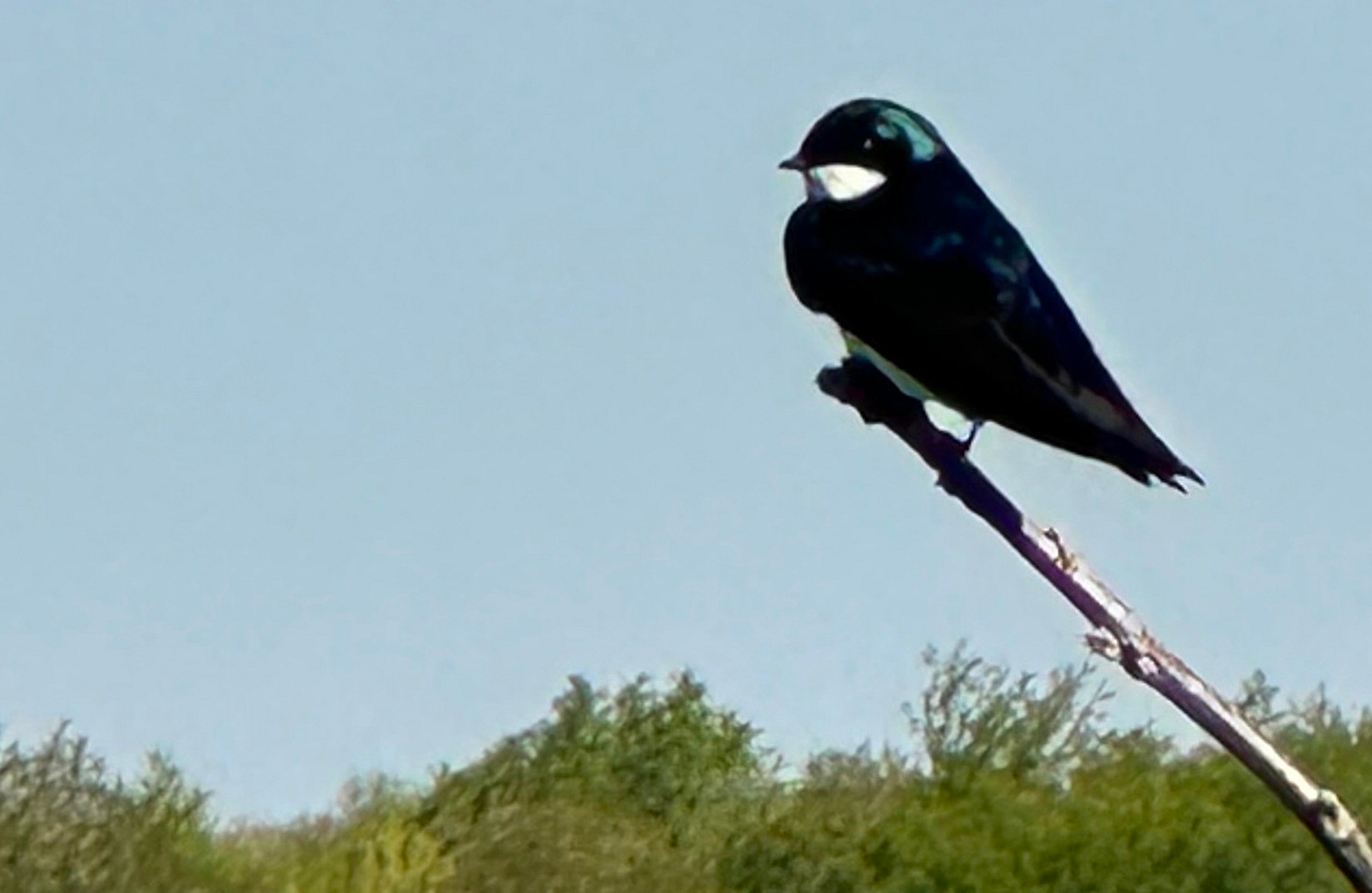
Great insight Tricia. You put it perfectly - observing birds brings clarity and peace, offsetting the daily chaos of the screens and meetings. I've found encounters with other birders incredibly positive - it's like sharing secrets that few will experience. Great piece!